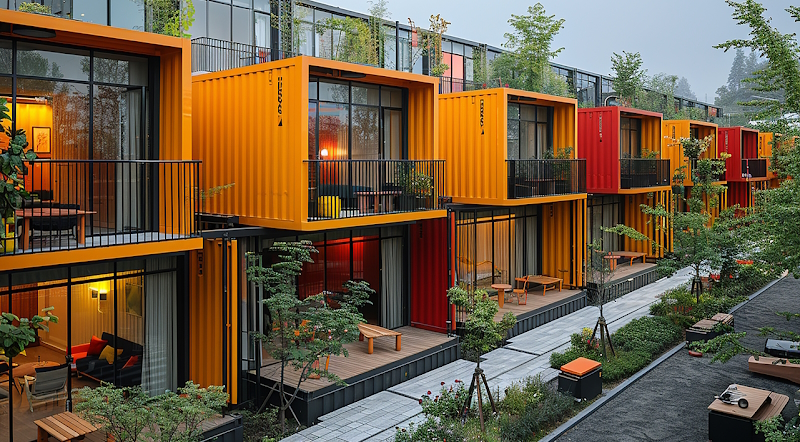Affordable Modular Housing Options in Australia: A Comprehensive Guide

Modular housing, also known as prefabricated or prefab housing, has gained significant traction in Australia in recent years due to its cost-effectiveness, sustainability, and rapid construction timeline. These homes are built in factories under controlled conditions, ensuring quality and precision, before being transported to the site and assembled. As the demand for affordable housing solutions continues to rise, modular housing presents a viable option for many Australians. In this article, we'll explore the various affordable modular housing options available in Australia, their benefits, and answer some frequently asked questions.
Benefits of Modular Housing
Before delving into the specific options, let's briefly touch on the key advantages of modular housing:
- Cost-effectiveness: Modular homes are often more affordable than traditional site-built homes, thanks to economies of scale achieved in factory production and reduced construction time.
- Faster construction: Modules are built concurrently, allowing for quicker assembly on-site, significantly reducing the overall construction timeline.
- Quality control: Factory production ensures better quality control, minimizing defects and waste.
- Energy efficiency: Modular homes can be designed and constructed to be highly energy-efficient, reducing long-term energy costs.
- Flexibility: Modular homes offer design flexibility, allowing for customization while still maintaining affordability.
Affordable Modular Housing Options in Australia
1. Budget-Friendly Modular Kits
For those seeking the most affordable modular housing option, pre-designed kits offer a cost-effective solution. These kits come in various sizes and styles, from simple studios to larger family homes. Manufacturers provide detailed instructions and sometimes even offer on-site assembly services.
2. Government-Supported Initiatives
The Australian government recognizes the need for affordable housing and has implemented various initiatives to support modular housing projects. These initiatives often provide funding, subsidies, or tax incentives to developers and buyers.
- - National Housing Finance and Investment Corporation (NHFIC): The NHFIC supports affordable housing projects through the provision of funding and investment. Their support can help reduce the cost of modular housing projects, making them more accessible to Australians.
3. Eco-Friendly Modular Homes
For those looking to combine affordability with sustainability, eco-friendly modular homes, supported by modular home financing Tasmania, are an excellent choice. These homes are designed and built with environmentally friendly materials and practices, reducing their carbon footprint and long-term energy consumption.
- - EcoModa: This company specializes in eco-friendly modular homes, offering a range of designs that incorporate sustainable features such as solar panels, rainwater harvesting systems, and energy-efficient appliances. Their homes are not only affordable but also contribute to a greener future.
4. Customizable Modular Homes
While pre-designed kits offer cost savings, some buyers prefer the flexibility of customization. Modular homes can be designed and built to suit specific requirements, from floor plans to finishes, without compromising on affordability.
- - Portalux Modular Homes: This company offers a range of customizable modular homes, allowing buyers to choose from various designs and finishes. Their team of experts works closely with clients to ensure their vision is realized within budget.
FAQs
1. Are modular homes as durable as traditional homes?
Yes, modular homes are built to the same building codes and standards as traditional site-built homes. They undergo rigorous quality control checks during the manufacturing process and are designed to withstand Australia's varying climatic conditions.
2. Can I customize my modular home?
Absolutely! While pre-designed kits offer cost savings, many manufacturers also offer customization options, allowing buyers to tailor their homes to their specific preferences and needs.
3. How long does it take to build a modular home?
The construction timeline for modular homes is typically much shorter than that of traditional homes. Modules are built concurrently in the factory, reducing the overall construction time. On-site assembly can take as little as a few weeks, depending on the size and complexity of the home.
4. Are modular homes energy-efficient?
Modular homes can be designed and built to be highly energy-efficient. Many manufacturers incorporate features such as insulation, double-glazed windows, and energy-efficient appliances to reduce energy consumption and long-term costs.
Conclusion
Modular housing is a viable and affordable option for those seeking modern, sustainable, and cost-effective homes in Australia. With various options available, from budget-friendly kits to customizable eco-friendly designs, there's something to suit every preference and budget. By considering modular housing, Australians can enjoy the benefits of quality, efficiency, and affordability in their homes.



